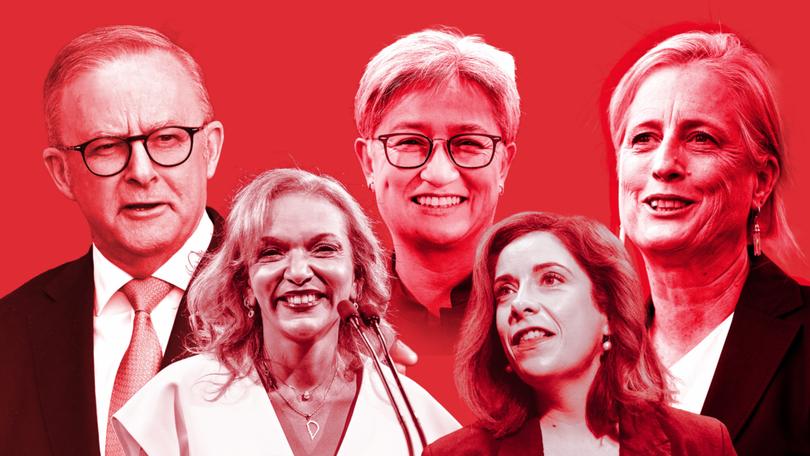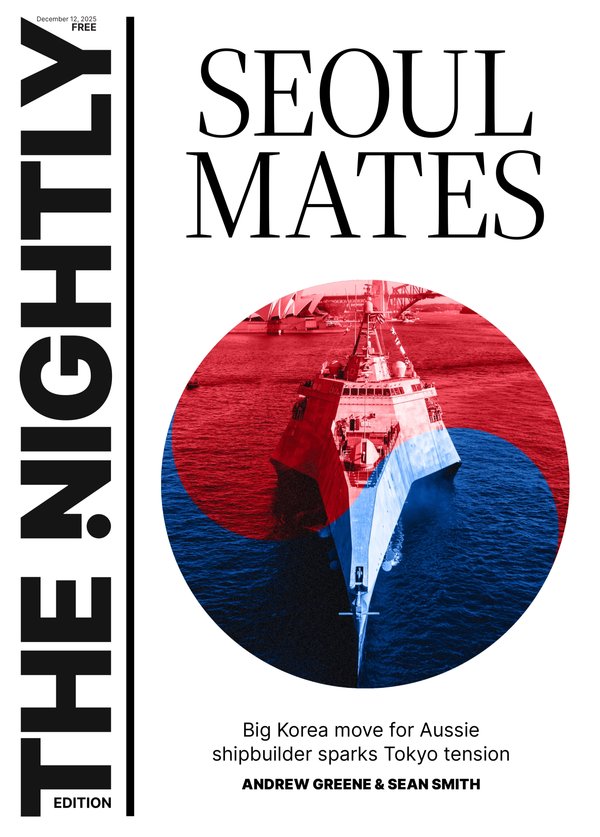Federal election 2025: New Labor MPs descend on Canberra for faction focus ahead of Caucus meeting

Newly elected Labor MPs will descend on Canberra on Thursday for factional negotiations ahead of a major caucus meeting on Friday to determine the future make-up of the Cabinet and top Government roles.
Labor sources say the party’s surprise landslide majority has largely given Prime Minister Anthony Albanese a free hand to shape the Cabinet as he wants to, and the Federal leadership is believed to favour the continuity of an already strong frontbench.
But left and right-leaning, as well as state and territory factions, will be jostling on the fringes to maximise their positions.
Sign up to The Nightly's newsletters.
Get the first look at the digital newspaper, curated daily stories and breaking headlines delivered to your inbox.
By continuing you agree to our Terms and Privacy Policy.One long-term Labor insider suggested Mr Albanese could wield the record number of women returning to parliament as an effective strategy to rise above factional disputes and to create a historic majority female Cabinet that matched their representation in caucus.
Mr Albanese faces a delicate balancing act to weave together multiple demands and could cede to pressure from the left to increase its share of Cabinet positions by offering the position vacated by former NDIS minister and right faction member Bill Shorten.
The Victorian right faction of the party is also squaring up to the New South Wales right to rebalance cabinet roles to more fairly represent their geographical proportion within the caucus.
As faction members gather on Thursday to thrash out a deal, the spotlight has turned on four of the most senior Cabinet jobs held by New South Wales men from Labor’s right – Home Affairs Minister Tony Burke, Education Minister Jason Clare, Energy Minister Chris Bowen and Industry Minister Ed Husic.
Speculation is rising that either Mr Bowen or Mr Husic could face pressure to step aside to diversify the spread of Cabinet positions.
In 2019, Mr Husic stood back to allow former NSW premier Kristina Keneally to be elevated to Labor’s frontbench to quell factional brawling over the composition of the party’s senior ranks.
This time round, one source mooted the Prime Minister could lever the majority female proportion of newly returned MPs as justification for manoeuvring one of their male colleagues aside.
In a caucus with more women than men, there was an expectation the upper ranks would reflect this and it could shift the focus from a tricky factional balance to a narrative where the Prime Minister could institute a majority-female Cabinet.
Senior members of the Cabinet have already been assured they will keep their portfolios, meaning Foreign Minister Penny Wong, Deputy Prime Minister Richard Marles, Treasurer Jim Chalmers, Finance Minister Katy Gallagher and Trade Minister Don Farrell will all remain in place.
Labor’s Cabinet and full ministry could be expected to reflect the high proportion of women returned to the caucus, Finance Minister Katy Gallagher said on Wednesday.
“We were the first female majority government in Australia’s history in 2022 – 53 per cent of the caucus were women. And I expect that it will be higher than that when all of the seats are determined in our caucus from 2025,” she told ABC Radio National Breakfast.
“So that makes our job easier, making sure that it’s reflected through all positions in the party, because it’s not just the ministry, it will be a whole lot of other positions as well,” she said.
As well as the finance portfolio, Senator Gallagher also served in the previous term as Minister for Women and Public Service.
Future portfolio decisions lay in the hands of the Prime Minister, but he had been “very proud of the fact that he had a Minister for Women who was Minister for Finance, that we had a gender equal cabinet,” she said.
“The thing about gender equality in the Labor Party is everyone in the caucus is for gender equality, that conversation or that argument has been won. So it’s an easy discussion for us,” she said.
As last results from tightly contested seats trickle through, Australia’s 48th parliament has already delivered a record-breaking number of women to the nation’s top governing body in Canberra, with the lion’s share joining Labor’s ranks in the lower house.
According to a report by the Global Institute for Women’s Leadership at ANU in April, women made up more than half (56 per cent) of the candidates being put forward by Labor, while less than a third (32 per cent) of the Coalition’s candidates are women.
While the election results remain fluid with Labor on 89 seats and 11 still in contention, about two thirds of the elected Labor Caucus could be made up of women.
Saturday’s election saw seven Labor women elevated to parliament from Queensland alone, prompting Aged Care and Sport Minister Anika Wells, the MP for Lilley, to exclaim there were enough to field an entire netball team, praising the party’s record on empowering women.
Overall, according to ABC projections earlier this week, the number of women in the House of Representatives is expected to grow by at least five and as many as 16.
Licia Heath, CEO of advocacy group Women for Election, which advocates for gender parity at all levels of government, said fewer female candidates ran in 2025 than in the 2022 poll but the higher success rate revealed how much the electability of women had changed.
Research, including from the Global Institute for Women’s Leadership founded by former Prime Minister Julia Gillard, showed that increased female representation at all levels of government raised trust in democracy, she said.
“When you see more diverse representation, a broader set of policies and solutions end up being discussed, because of the more diverse lived experience that you have around Cabinet tables. Corruption falls when you have more women, culture improves.”

